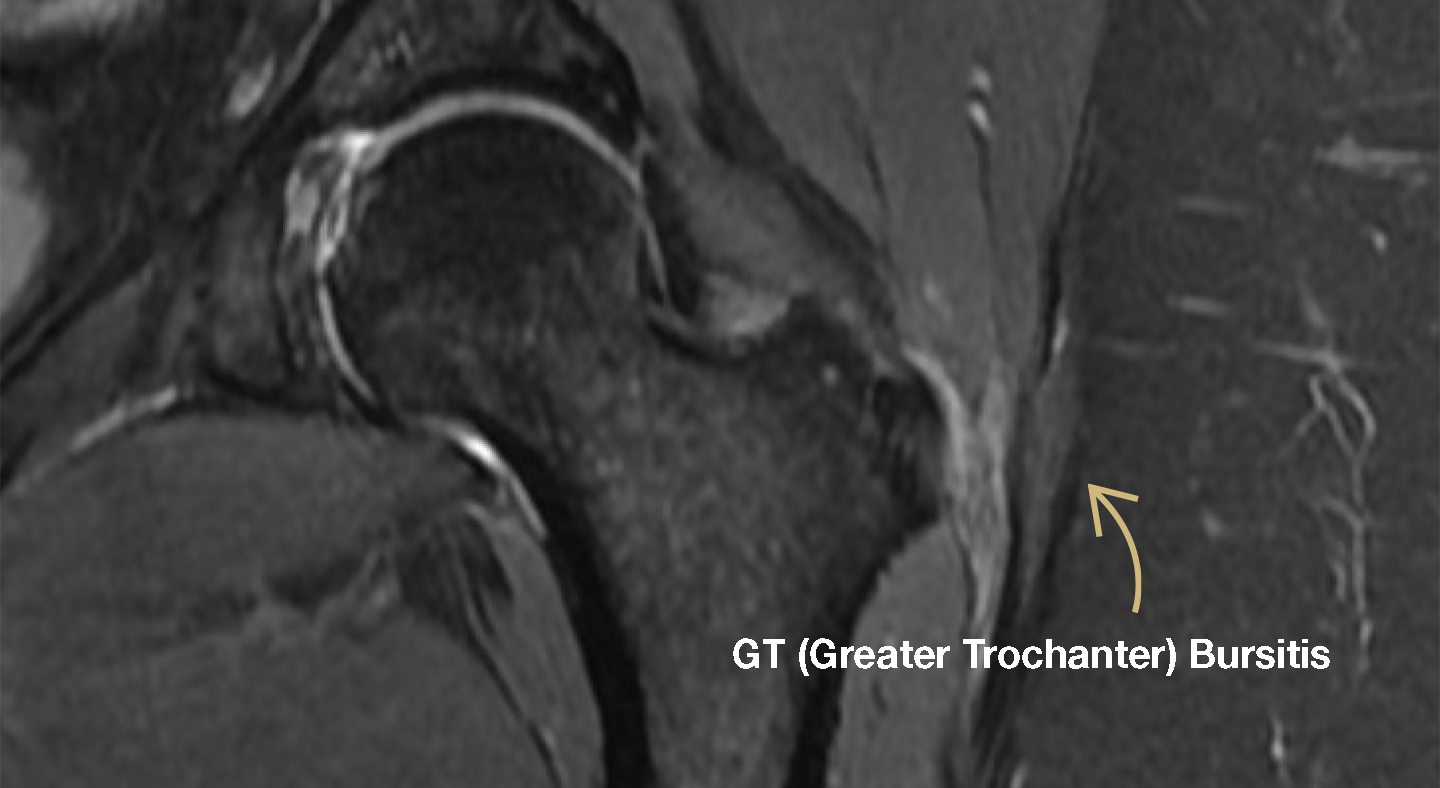The trochanteric bursa, often referred to as the bursa of the hip, is a very innervated membranous sac that lines the greater trochanter (outer bony bump of the hip), allowing the overlying iliotibial band (IT band) to glide back and forth during activities without rubbing over the gluteus tendons. In the normal, non-pathologic state, there is very little fluid in the bursa and the tissue is collapsed on itself and comprised of little substance.

Trochanteric bursitis refers to an inflammation of the trochanteric bursa that typically develops over several weeks to months, causing pain and dysfunction. The condition is correlated with low back pain and degenerative disc disorders, uneven walking or running gait, as well as with pelvic injuries and surgeries. As the lumbar and pelvic muscles become deconditioned, excessive stress is placed on the hip abductors, which are overloaded and cannot maintain proper pelvic balance during walking or standing. As a result, the loss of pelvic balance places excessive stress on the IT band, which becomes tight and rubs on the greater trochanter. The increased pressure causes inflammation and thickening of the trochanteric bursa (bursitis), ultimately leading to pain and dysfunction and subsequently, if not treated promptly, to gluteus tendon tears.
Treatment for trochanteric bursitis is centered around IT band stretching, hip abductor strengthening, and core/paraspinal muscle strengthening and conditioning. Often, the pain from bursitis prevents patients from being able to participate in physical therapy and some providers would suggest corticosteroid injection into the trochanteric bursa. While this has very high success rates in improving inflammation and pain in the short term, it may also lead to further tendon weakening and future tears and should not be repeated. PRP, in this case, would be a better solution with better long term success rates, although it takes longer to work, as it truly enhances a biological process of healing.
Patients who fail to improve with physical therapy and injections may be candidates for a minimally invasive procedure to debride the trochanteric bursa and partially release the tight IT band. The procedure is sometimes accompanied by other more involved procedures that may lay in the basis of the Bursitis, like hip scope to correct FAI (which may result in GT bursitis).